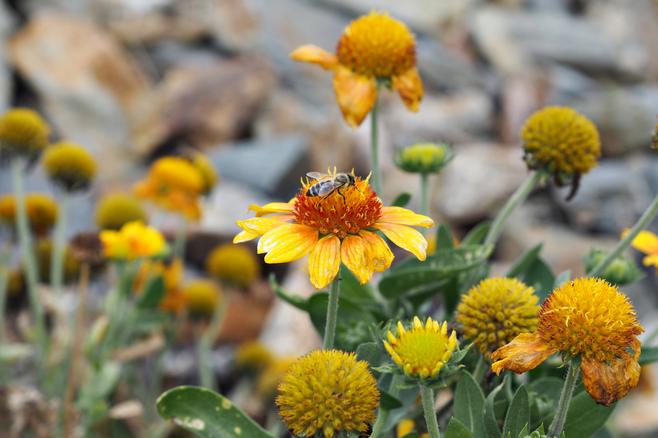
Flower garden without work?Bet on perennials!
Article
In the right conditions, perennials can last a good number of years. At the same time, their lifespan is influenced by several factors: among the most important are the condition of the soil, the availability of water and nutrients, and you shouldn't underestimate the lighting conditions either. Which perennials can handle direct sun, which prefer shade and how to care for them?
9 tips for lesser-known perennials. Will you give them a chance?
What do bees like? What plants to plant so that they fly to you
Perennials suitable for the sun
Perennials that can handle direct sun and drier soil include red mavun blooming from May to October or resistant Chinese wolfberry, which can cope even with very poor soil. Scarlet chrysanthemum and Virginia mayfly need soil richer in nutrients, but it can handle partial shade in addition to full sun. In the kitchen you can use daylilies, whose edible flowers can be added, for example, to salads. Do you want a really long-lived perennial? Bet on peonies, which can live for more than fifty years.
Other suitable plants: calamander sedge, bright and purple coneflower, double sedum and large-flowered sedum

Perennial flowers in partial shade
In partial shade, the big-flowered bulrush with up to eight-centimeter flowers will thrive, and the purple-flowered liriope can keep it company. Among the woods, azaleas and rhododendrons, plant heart-leaved mitron, spiked spike belongs in the foreground of the bed. Do you love colors? In that case, you will like primroses, for which you can choose early and late blooming species.
Other suitable plants:Shadow-loving flowering plants
In shady places, plant yellow-flowered Triple sedum. In the spring, chamois blooms, and at the end of April you will see gorgeous flowers. Forest species, which usually grow under deciduous trees, are generally best suited to the shade. This includes, for example, Polyflower, Yellow smoky flower or Pitulník.
Other suitable plants: ferns, hollyhocks, brambles, soft brambles and anemones
How and when to plant perennials
The most suitable time for planting is usually in spring and autumn. In general, perennials blooming in spring and early summer are planted in autumn, i.e. from mid-August to October. Plants blooming during summer and autumn are planted in spring, i.e. from March to mid-May. Follow the temperature conditions and the condition of the soil. In colder climates and in wetter or heavier soils, it is advisable to plant later in spring or earlier in autumn.
10 tips on how to grow peonies so that they grow and bloom beautifully
Do you love dahlias? Then you need to plant them now!
Correct planting density and depth
The planting depth and density is also important. Both depend on the specific requirements of the plant, which should be communicated to you at the horticultural store where you will be shopping. Density depends mainly on the size of the plant at maturity. Plant tall perennials at a distance of 80 to 120 cm, medium-tall 50 to 60 cm and short ones 20 to 30 cm apart.
Perennials are usually planted to such a depth that their sprouting shoots are at the level of the soil surface, or protrude slightly. If you plant it too deep, the plant may not bloom and may even die.
Fertilizing, loosening and pruning
Although perennials are relatively undemanding, sometimes they still need your attention, especially in the first year after planting. This is mainly weed removal, more frequent watering and loosening the soil.
Older perennials do not need any special watering, they are content with fertilizing once a year and do not suffer from mulch. For flowering perennials, it is a good idea to pluck and continuously remove dead flowers. By doing so, you will extend the flowering period, increase the density of the inflorescences and, in addition, greatly relieve the plants.
To make it green beautifully or What about the lawn in March?
Gardeners, beware: Thanks to our calendar, you will have the harvest of your dreams this year
How to winterize perennials
In autumn, cut the plants near the ground and loosen the soil with your fingers. The vast majority of perennials do not need winter protection and can cope with a possible layer of snow. But if you grow species from other climatic conditions, they may have a problem with moisture or frost and it is necessary to protect them with something. A layer of raked leaves weighed down by branches or a blanket of fir or spruce needles is suitable.
Do you really want to get your garden moving this year? Step-by-step instructions on how to start a rock garden in the spring.
ynezorPumanzeSaNyknalC






